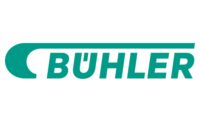![]()
Brooks Pharmacy is Committed to Candy
by Mary Ellen Kuhn
With the Eckerd stores acquisition on the horizon,
the Brooks Pharmacy chain is ready for the big time, and candy category manager
Matt Kirk is up for the challenge.
Matt Kirk, senior category manager for candy and food for the
Warwick, R.I.-based Brooks Pharmacy chain, is a master o f understatement.
“I’m right to the point,” he says during the course of an interview. “Some people like it, and some don’t.”
“I’m right to the point,” he says during the course of an interview. “Some people like it, and some don’t.”
Thus it comes as no surprise that he is not overreacting to
the recent announcement that Brooks’ parent company, The Jean Coutu Group, is
set to acquire 1,500-plus Eckerd drug stores. Asked what impact the acquisition
will have on his role at the chain, his answer is merely a wry chuckle coupled
with this observation: “I’ll probably never see another day off for the rest
of my life.”
After 37 years in the retail trade [more if you count part-time
work as a teenager], Kirk doesn’t get worked up too easily. He’s already been
through a few acquisitions, although on a smaller scale. Kirk joined Maxi Drugs,
a subsidiary of The Jean Coutu Group (a Canadian company) in 1987, when it was
a two-store venture. Maxi/Jean Coutu acquired 16 pharmacies from Douglas Drug
Inc. in 1990, and in 1995, it acquired the Brooks Pharmacy chain of more than
200 stores. Brooks’ current store count is 333.
|
Dedicated to variety
Kirk’s low-key demeanor is not to be confused
with a lack of intensity or commitment. The plainspoken, unpretentious Kirk
can typically be found in the office from 6 a.m. to
6 p.m. And even before the developments with Eckerd, he found it difficult to take more than a week’s vacation each year. (This year, however, he’ll be taking a few extra days off in October for his daughter’s wedding!)
6 p.m. And even before the developments with Eckerd, he found it difficult to take more than a week’s vacation each year. (This year, however, he’ll be taking a few extra days off in October for his daughter’s wedding!)
Despite his full schedule, Kirk doesn’t hesitate when it comes
to making time to meet with a vendor, no matter whether the company is large
or small.
“I’m always looking for something new. If you don’t see people, you’ll never know [what is available],” he reflects.
One longtime sales executive at a mid-size candy vendor recalls calling on Kirk 30 or so years ago. “He is no different buying for this chain of stores [than he was then],” says the vendor. “He’s the same humble, polite, funny person. He’s a gentleman.
“Whether he buys from you or not, what is relevant, in my opinion, is that he’ll see anyone, and he’ll look at any item,” notes the vendor. “He is very accessible.”
“I’m always looking for something new. If you don’t see people, you’ll never know [what is available],” he reflects.
One longtime sales executive at a mid-size candy vendor recalls calling on Kirk 30 or so years ago. “He is no different buying for this chain of stores [than he was then],” says the vendor. “He’s the same humble, polite, funny person. He’s a gentleman.
“Whether he buys from you or not, what is relevant, in my opinion, is that he’ll see anyone, and he’ll look at any item,” notes the vendor. “He is very accessible.”
Kirk prides himself on creating an enticing candy assortment
that serves to create a point of difference for the Brooks chain, which competes
in its New England markets with such mega-retailers as Walgreen’s and CVS. Incorporating
unique items from smaller players into the Brooks candy mix makes for a more
interesting shopping experience, Kirk believes.
And that’s why he’s willing to stock one or two SKUs from a
number of different regional vendors, rather than relying on an assortment comprised
mainly of offerings from the market leaders. It requires more paperwork, but
Kirk is convinced that it’s worth the trouble.
Well-stocked stores
All of the major drug store players have convenient locations
and fairly comparable prices, so assortment is critical to attracting shoppers,
Kirk reiterates. “What I can do is give them [shoppers] a deeper selection,”
he says. Complementing the selection, he continues, is a strong “in-stock position,
which is a big thing for us.”
As for the vendors with whom he deals, he maintains that the
bottom line — for a vendor of any size — is performance. “If it didn’t sell,
it wouldn’t be there,” says Kirk of the confectionery items he stocks. Being
first to market with new products is a corporate mandate at Brooks Pharmacy,
so certainly Kirk’s commitment to staying in close touch with vendors is a means
to that end.
When making new-product decisions, Kirk isn’t afraid to go with
his gut — at least to a certain extent. “A lot of people just go straight by
the numbers,” he says. “I use numbers, but I also go for items that I like.”
Between the cash-register candy fixtures and the in-line candy
aisle, Brooks stores typically carry more than 400 everyday candy SKUs. That
includes 212 SKUs in the cash register area alone, where the shelving typically
extends from 20 feet to 24 feet. “There’s not an inch of space left up front,”
says Kirk.
Depending on the size of the store, the length of the
candy aisle ranges from 28 feet to 40 feet and
boasts a large assortment of laydown and peg bag products. In the latter
category, there’s everything from mainstream M&M’s and
Reese’s Pieces to bagged novelty items such as Ring Pops, Pop Rocks and Whistle Pops.
Brooks offers a private label bagged assortment that numbers
about 50 items supplied by Ame rican Food Products, Methuen, Mass. The chain
recently revamped its private label candy packaging, switching from header-card
bags to flow bags and incorporating a system of color-coding to indicate pricing.
Candy in red bags sells 2/$1; blue-bagged items are 99 cents each; and green
packaging indicates that the price is 2/$3. Kirk says he introduced the 2/$1
private label bagged candy eight years ago, and it has established a solid niche
for itself.
“It doesn’t bring in a large dollar ring,
but it satisfies the customer who wants to purchase a variety of candies at
a reasonable price,” he notes.
|
Staying close to the consumer
And Kirk is all about taking care of the Brooks customer — even
to the point of willingly fielding customer complaints.
“If anyone calls with a customer complaint,” he says. “I’ll go out [to a store] and buy the item. I may have the rep pick up the item, but I’ll pick it up myself too.”
“If anyone calls with a customer complaint,” he says. “I’ll go out [to a store] and buy the item. I may have the rep pick up the item, but I’ll pick it up myself too.”
Recently, he says, he heard from a shopper who felt the
marshmallow Easter egg item he’d purchased was too hard. “So I
went out and bought a couple,” says Kirk, who reports that he found
the egg’s candy shell was too thick.
“I like the customer calls,” says Kirk. “Usually they’re very
easy to deal with. All they want is to have someone to talk to.” Gentleman that
he is, Kirk is more than willing to oblige. Again, perhaps it’s a reflection
of his down-to-earth style, but the senior category manager finds spending time
at the store level to be an informative exercise.
He makes regular Brooks store visits to see how the plan-o-grams are carried out at store-level. Kirk also likes to keep an eye on the competition with frequent visits to retailers in all classes of trade.
He makes regular Brooks store visits to see how the plan-o-grams are carried out at store-level. Kirk also likes to keep an eye on the competition with frequent visits to retailers in all classes of trade.
Showcasing seasonal
Brooks uses four-foot lowboy display fixtures located on a diagonal
from the candy gondola to show off seasonal candy selections. Kirk adds anywhere
from 115 SKUs at Halloween to more than 200 at Easter. Halloween and Christmas
generate the greatest seasonal revenues for the chain, he reports.
Kirk also does his best to keep shoppers committed to
the candy category during the summer months. This year’s summertime
assortment will include about 150 SKUs. Kirk brings the first batch of them
in right after Easter, and then refreshes the assortment with some
different SKUs in June.
“Instead of having the same set out there from May through September,
we break it up and bring in new items in between,” he says. “You keep the Twizzlers
and the marshmallows out for the whole period, but then you bring in fresh stuff
to attract consumer interest.”
Kirk also uses endcaps and shipper displays to keep frequent shoppers interested during the course of the season.
Kirk also uses endcaps and shipper displays to keep frequent shoppers interested during the course of the season.
“The endcaps change a few times during the season,” he says.
“At Christmas time, they’ll change from boxed chocolates over to gift sets for
another couple of weeks then to packaged candy, so the customer gets a look
at something fresh when they come in.”
Managing seasonal candy sales is a challenge, Kirk acknowledges. Not only are consumers shopping later and later for their holiday confections, but vendors are pushing retailers to advance their seasonal candy order placements.
“More manufacturers are looking for earlier commitments on seasonal,” says Kirk. “No one wants to run big inventories. They’re looking for a commitment five or six months before the holiday.”
Managing seasonal candy sales is a challenge, Kirk acknowledges. Not only are consumers shopping later and later for their holiday confections, but vendors are pushing retailers to advance their seasonal candy order placements.
“More manufacturers are looking for earlier commitments on seasonal,” says Kirk. “No one wants to run big inventories. They’re looking for a commitment five or six months before the holiday.”
Brooks revamps plan-o-grams annually. Last year, says Kirk,
he added more peg bag space within the candy section. This year when the new
plan-o-gram goes out to the stores at the start of September, he expects that
it will be reconfigured to allow for more shelf space — necessary to accommodate
the proliferation of candy packaged in stand-up gusseted bags.
In general, Kirk says, he’d like to see vendors offer more items in smaller and more efficient pack types. It’s beneficial for the retailer and appeals to the consumer, he maintains.
In general, Kirk says, he’d like to see vendors offer more items in smaller and more efficient pack types. It’s beneficial for the retailer and appeals to the consumer, he maintains.
Matt Kirk’s Do’s and Don’t’s for Vendors
Do negotiate fairly. As one might expect with someone as direct
as Matt Kirk, he appreciates a straightforward approach to negotiation. "I just
ask them to come with their best price," he says. "I won’t call people back
two or three times looking for a price."
Don’t think you’re the only company out there. "We only have so much space. Every store is not a Wal-Mart," Kirk emphasizes.
Don’t think you’re the only company out there. "We only have so much space. Every store is not a Wal-Mart," Kirk emphasizes.
Do be honest. Vendors seeking to establish a relationship with
Kirk would do well to remember that honesty is the best policy. "Don’t come
in telling me that all our competition carries this product so that when I go
out to check their stores I find that it’s not carried in this part of the country,"
says Kirk.
Do be part of the markdown program. It benefits both retailer
and vendor in the end. "On our markdown program I expect the vendors to share
in the liability of their products that I am purchasing in good faith," says
Kirk. Sharing in the potential liability in this way makes it easier for a retailer
to take a chance on unproven products, he points out.
Don’t expect plan-o-gram miracles. "Vendors all think that they
can change your plan-o-gram 12 months a year, which is getting out of control,"
Kirk observes.
Do respond quickly to requests "If you are asked for a new item
sheet, please do it ASAP before another item moves ahead of it," Kirk urges.
"I do not believe that some manufacturers realize how many new items or items
that you do not currently carry are shown to you each year. If I have all the
information at hand and an opening comes up in a program at the last minute,
they will be considered first."
Regional Player Brooks To Move into No. 4 Spot in U.S.
marketplace
When Brooks Pharmacy’s parent company, The Jean Coutu Group,
signed an agreement with J.C. Penney Co. to acquire approximately 1,539 Eckerd
drugstores and support facilities this spring, it was a case of the little fish
swallowing the bigger one.
Brooks operates 333 U.S. drug stores, and The Jean
Coutu Group has 324 stores in Canada. It doesn’t take a math whiz to
see that the Eckerd store count is more than twice that of the current
Brooks/Jean Coutu operation.
But the Jean Coutu Group has a track record that inspires confidence
in its ability to pull off such a feat. Brothers Francois Jean Coutu and Michel
Coutu explained in an April presentation to financial analysts and members of
the media that when their company acquired Brooks in 1995 the contrast between
the acquirer and the acquired was even more dramatic — 242 Brooks outlets vs.
20 Jean Coutu pharmacies. This time around, the company enjoys the advantage
of more sophisticated technology that will facilitate the integration of the
two organizations. The chains also have some operational similarities.
The acquisition price of $2.375 billion is about 30 percent
of the acquired stores’ total sales of $7.9 billion — which makes it a "very
attractive" transaction, pointed out Michel Coutu, president and CEO of The
Jean Coutu Group U.S.A. He noted that a more typical ratio for such transactions
is a purchase price equal to about 70 percent of sales.
That’s not the only number that looks good to
The Jean Coutu management team. Despite the fact that it is a smaller
chain, Brooks has higher front-end profits and a lower shrink level. When
the advantages of scale the acquisition will bring are factored in,
there’s major upside potential, Michel Coutu told analysts.
Brooks’ profit margins are significantly higher
than Eckerd’s (6.2 percent for Brooks vs. 4.3 percent for Eckerd),
the brothers pointed out, despite the fact that it’s a much smaller
operation. So there is substantial margin-enhancement potential for the
acquired stores.
What’s more, Michel Coutu noted that
acquiring the Eckerd stores will mean improved negotiating clout for
Brooks.
With the Eckerd acquisition, The Jean Coutu Group will
become the fourth-largest drug store chain in North America, with a
combined network of 2,196 stores. The Eckerd stores — which will
continue to operate under that name — are located in 13 states in the
Northeast and Mid-Atlantic region. Only CVS (which is acquiring 1,260
Eckerd stores), Walgreen’s and Rite Aid will be larger players in the
drug store channel.
At Confectioner press time, the transaction
— subject to government review and approvals — was expected to
close this month.





